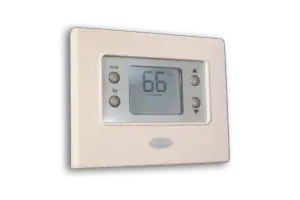CBIA gathers lawmakers to discuss the state’s energy future

The Connecticut Business and Industry Association (CBIA) recently held a roundtable featuring state legislators in key positions on energy and environmental committees that discussed the ongoing impacts of energy prices.
Peter Meyers, a policy associate for the CBIA, moderated the event and began by asking the legislators for their preferences in increasing the supply of energy for the state.
“I don’t think it can be overstated how important I think this question is for the future of our state and our region,” said Ryan Fazio, the Republican state senator for the 36th district which includes Greenwich, New Canaan, and parts of Stamford. “According to ISO [Independent System Operator] New England, by 2040 we’re going to see a 70% increase in demand. If we mandate new electric vehicles, then it’s going to increase even more.”
Fazio, the ranking member of the State Senate’s Energy and Technology Committee (ETC), said he favors an “all of the above” approach to energy generation in Connecticut by constructing new natural gas pipelines to reach fracking projects in Pennsylvania. He expressed doubt about the cost effectiveness of offshore wind energy and worried about the possibility of 30 days with no wind rapidly depleting the state’s battery storage.
“I think that in 10, 20 years people are going to look back at the retirement of a lot of Northeastern nuclear plants – and say it was a historic mistake,” Fazio observed, noting that nuclear energy offers distinct environmental advantages but has faced significant opposition.
“Offshore wind is encountering choppy seas right now,” said State Rep. John Steinberg, a Democrat representing Westport who serves as the chairman of the House Energy and Technology Committee. “We hope it gets smoothed out in a few years. You will see that on the committee there will be a lot of focus on expanding solar throughout the state from large grid-scale to the smallest canopy over a parking lot. In the aggregate that will help us move the needle sufficiently to address some of the increased demand.”
Roundtable members from both parties called for a diverse mix of energy sources and expressed hope for the possibility of expanding the state’s nuclear power generation, possibly through a modular system installed at the existing Millstone Nuclear Power Plant in Waterford, while admitting such an endeavor could be an uphill battle. The exact make up of preferred energy diversity differed between each lawmaker.
Representative William Buckbee, a Republican representing New Milford and the ranking member of the House ETC, described the legislature as attempting to strike a balance between “laudable” environmental goals and the realities of affordability.
CBIA members were also given the chance to ask questions of the panel.

Christina Lampe-Onnerud, the founder and CEO of Cadenza Innovation in Danbury, told the panel that her company is at the “precipitous moment” when their innovative lithium-ion battery technology is poised to revolutionize storage, but that the company needed law maker’s help.
“Today your policy on deployment of battery technology is very clear,” Lampe-Onnerud said, “But residents do not have the same rights. That is something you can address effortlessly and immediately. Take the same legislation you have for commercial and industry and bring it to residents.”
Lampe-Onnerud also called for changes to the testing and certification regimen for new battery technologies, which she said were heavily influenced by Asian battery producers to stifle competition.
“We rely heavily on UL Certifications,” she said, referring to UL Solutions, one of the primary providers of safety certifications on many products. “They’re wrong, they’re manipulated, and the tests are not valid.”
“Red tape is a problem in Connecticut,” Lampe-Onnerud added, offering to set up a presentation to help legislators understand more effective safety certification procedures.
“Connecticut can be a leader in this,” said Steinberg in response, noting the state’s growing battery industry. “Everything we can do to facilitate the adoption of technologies that solve problems as Cadenza’s lithium batteries do makes a huge difference and make us players not just in Connecticut but nationally and globally.”
Lee Hoffman, an attorney with Pullman & Comley LLC, also asked the panel for insight into the approach being taken by the Public Utilities Regulatory Authority (PURA).
“Recently, PURA Chairman Marissa Gillett did an interview and she said, ‘There’s a real distinction between a regulator viewing themselves as simply calling balls and strikes, versus a regulator who says I need to not just be the umpire but the first base coach,’” Hoffman said.
Noting that neither utility company in the state likely considered him a friend because of his involvement in ongoing cases against them, Hoffman said he had concerns about whether Gillett might be overstepping her authority by not only adjudicating policy but also taking an active role in directing it.
“Utilities are already fighting a three-on-one battle when they go in front of PURA,” Hoffman said, counting himself alongside the Office of the Attorney General and the Office of Consumer Counsel as typically involved in proceedings against the companies. “If PURA is acting as the adjudicator, is it really fair to have them acting as both the umpire and the first-base coach?”
Fazio responded that he believes that the commissioners were committed to working within the statutory framework that the legislature has provided but added that “there can certainly be reasonable disagreement on whether statute is applied correctly to different cases.”